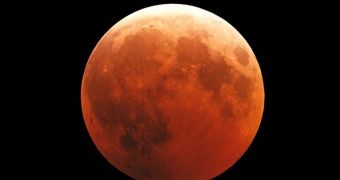Between 0133 and 1730 UTC tomorrow, December 10, the NASA Lunar Reconnaissance Orbiter (LRO) will be monitoring the last lunar eclipse to occur in 2011. The spacecraft will get an excellent view of the event, since it orbits only 31 miles (nearly 50 kilometers) above its surface.
One of the most important things researchers will keep track off is how quick obscured areas on the lunar day side cool off during the eclipse. This could provide interesting data on the type of soils and rocks present at those locations.
The mineral composition of the ground, the amount of heat it can store, as well as rock density, are all important factors in determining how quick the surface will cool down. The Diviner instrument aboard the LRO is uniquely equipped to conduct such investigations.
The Diviner Lunar Radiometer Experiment (DLRE) is responsible for measuring lunar surface thermal emission. Its purpose is to provide information for future surface operations and exploration, when NASA finally decides to send astronauts to the Moon again.
Tomorrow's event will be the last time when the LRO and its complex instrument suite will have the opportunity to image the Moon as it is entirely covered by Earth's shadow. The spacecraft will have 51 minutes at its disposal to conduct the research.
“A lunar eclipse occurs when Earth is directly between the Sun and the Moon, blocking the Sun's rays and casting a shadow on the moon,” a press release published by NASA explains.
“As the Moon moves deeper and deeper into Earth's shadow, the Moon changes color before your very eyes, turning from gray to an orange or deep shade of red,” the statement adds. For December 9, the event will be visible only faintly from the eastern coasts of the US.
The West Coast will be able to see the eclipse significantly better, starting at 3:33 am PST and reaching peak redness at 6:30 am PST. “The moon takes on this new color because sunlight is still able to pass through Earth's atmosphere and cast a glow on the Moon,” the document says.
Also interesting to note here is that Earth's atmosphere is very efficient at removing blue light from sunlight, therefore leaving it colored only in orange and red. This is why the Moon appears to be made of blood during such eclipses.

 14 DAY TRIAL //
14 DAY TRIAL //